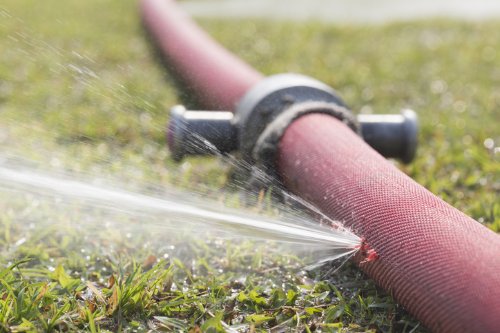Perspective
Protect yourself from summer water damage
August 12, 2025
by PEMCO Insurance
 Summer’s heavy water use puts an added strain on your pipes, and damaging leaks can easily go unnoticed while you’re away on vacation. If you usually let down your guard once winter’s danger of frozen pipes has passed, you’ll want to follow these four tips to make sure your home isn’t at risk for water damage during the warmest time of the year.
Summer’s heavy water use puts an added strain on your pipes, and damaging leaks can easily go unnoticed while you’re away on vacation. If you usually let down your guard once winter’s danger of frozen pipes has passed, you’ll want to follow these four tips to make sure your home isn’t at risk for water damage during the warmest time of the year.
How do water damage risks go up in the summer?
Summer boosts water-damage risks three ways:- More frequent showering and landscape irrigation puts pipes under greater strain.
- Home improvement and landscaping projects can crack underground pipes if they’re hit during excavation or even by an errant shovel when planting a new shrub.
- Leaks that occur during vacations may not be discovered for days, leading to extensive damage and potential mold growth.
How can I protect my home from summertime water damage?
These four tips can help safeguard your home and keep you from wasting money on water leaks:- Check that your refrigerator’s icemaker hose isn’t crimped. With kids home for the summer, your refrigerator will get opened and closed a lot more often. Over time, refrigerators can slowly be pushed back toward the wall, compressing the icemaker hose and causing leaks. Replace appliance hoses and connectors (washers, icemakers, dishwashers) every five years to reduce the chance of a leak, since those parts weaken with wear and typically are guaranteed for no more than one year.
- Monitor irrigation systems, especially at the start of the season. Winter freezing and thawing can lead to cracked pipes. And any time of year, it’s easy to accidentally hit an irrigation pipe when you’re digging in the yard. Not only do cracked pipes leak, they allow debris to get into the line. If a pebble lodges in main line diaphragm valve, water will keep flowing even when the valve is supposed to be turned off. For a few weeks after you’ve patched a pipe, check your water meter’s flow indicator for signs of excess water usage. Undetected irrigation leaks can drain into your crawlspace and lead to astronomical water bills that your utility may or may not agree to partially waive.
- Turn off the outdoor faucet connected to hoses. Many homeowners leave the hose hooked up and turned on, relying on the spray nozzle to shut off the water flow. A pressurized hose can easily spring a leak and run for hours, perhaps flooding a basement or crawlspace, before it’s noticed.
- Shut off water before leaving on vacation. Before you leave town, shut off your home’s main water valve. Or if that’s not practical (for example, you have pet sitters coming in or you want your sprinkler system to keep watering the lawn), turn off the supply valve to the three main culprits for water damage: the washing machine, dishwasher and icemaker.
What else can I do to prevent water damage?
Another tip: Install water sensors near washing machines, hot water heaters, toilets, dishwashers and icemakers. Not all water-leak damage starts out as a sudden gusher, and a water sensor can alert you to trouble early, before structural damage sets in.When you install water sensors, you’ll not only save yourself a potentially expensive hassle, but you’ll get a protective device discount on your PEMCO homeowner or renter insurance. When you link them to your smartphone to receive alerts, you’ll get a bigger discount. And if you connect them to an automatic water shutoff (perfect if you’re away from home all day), you’ll save even more.
We’ve devoted an entire section of our Blog to preventing water damage. Learn practical, low-cost ways to keep your home safer all year long.
Share on social media